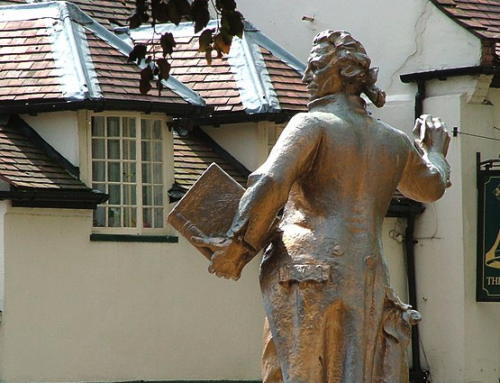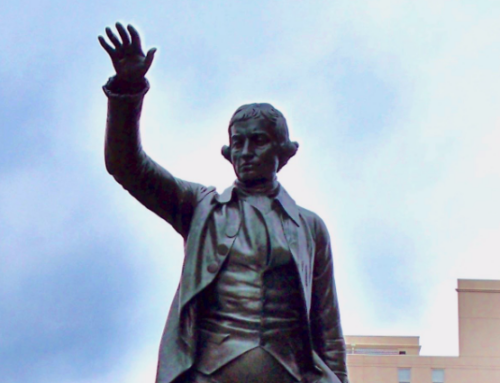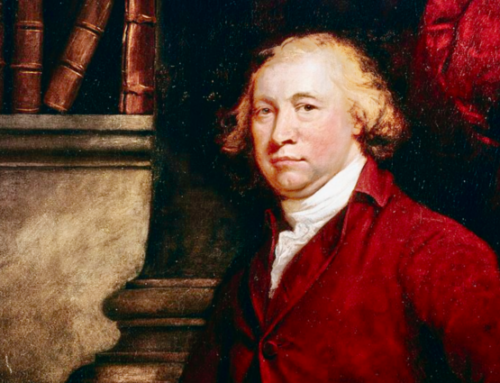 Two hundred and twenty years ago, in January 1794, one of the more illuminating, but also neglected, episodes of the French Revolution was set in motion in the Vendée and surrounding area of west-central France (broadly, the modern-day administrative region of Pays de la Loire). Under the leadership of the Revolutionary general Louis-Marie Turreau, six divisions of the revolutionary Armée de l’Ouest set out with instructions from the Committee of Public Safety to seek out, requisition, burn, or otherwise eliminate all “brigands,” known or suspected, together with their families, possessions, and property. This so-called colonnes infernales proceeded to do in the following months as they crossed the subdued territories that lay, roughly, westward from Le Mans and Angers.
Two hundred and twenty years ago, in January 1794, one of the more illuminating, but also neglected, episodes of the French Revolution was set in motion in the Vendée and surrounding area of west-central France (broadly, the modern-day administrative region of Pays de la Loire). Under the leadership of the Revolutionary general Louis-Marie Turreau, six divisions of the revolutionary Armée de l’Ouest set out with instructions from the Committee of Public Safety to seek out, requisition, burn, or otherwise eliminate all “brigands,” known or suspected, together with their families, possessions, and property. This so-called colonnes infernales proceeded to do in the following months as they crossed the subdued territories that lay, roughly, westward from Le Mans and Angers.
A little under a year earlier, in the absence of a strong military presence in that area, a cluster of insurgent risings in the regions to the north and south of the River Loire had rapidly developed into a full-blown armed rebellion against the revolutionary government in Paris, with local guerrilla-type resistance fighters known as Chouans gradually combining with more formally constituted armed bodies—most famously, the Catholic and Royal armies, including a largely peasant force under the leadership of the devout Catholic and former peddler Jacques Cathelineau. By the end of December 1793, undone by lack of resources, disunited leadership, and an inability to profit from tentative or fitful British support, the Vendée uprising had been crushed in decisive engagements at Le Mans and Savenay. Despite, or perhaps because of, continuing threats from foreign enemies on the borders of the country, the Committee of Public Safety decided that “pacification” of the Vendée now required an intensification of the brutality that had marked the campaign from its early days.
The Vendéans had not risen to avenge the king, Louis XVI, who had been guillotined the previous January, nor out of loyalty to the ancien régime or the feudal structure that had once shaped their largely agrarian, peasant communities. They were, instead, resisting the imposition of military quotas by the Convention, which struck at the rhythm of their economy, and defending the role of the non-juring, or refractory, clergy, who were suffering increasing persecution for their resistance to state policy as enshrined in the Civil Constitution of the Clergy. This violent expression of resistance gave testimony to Edmund Burke’s early prognostications about the threat of the revolution to religion, property, and manners. Indeed, the cause of resistance in the Vendée became “first amongst the first” in Burke’s mind as he agitated for intervention in 1793 to extirpate Jacobinism at its root.
But it was the fate that befell the Vendéan population in 1794 that was destined to turn Burke’s penetrating forecasts into grim reality, and to endow the prophet himself with almost preternatural insight into the mind of the modern revolutionary. Renamed “Vendée Vengé” by the Convention, the territory was prostrate before Turreau’s colonnes infernales, and it is estimated that, by April 1794, upward of 30,000 of the inhabitants had been slaughtered, taking the total number of French people killed in the suppression of the revolt into hundreds of thousands. Some of the perpetrators of these actions can be read speaking in their own words, an eerily modern-sounding language and sardonic black humor by which brutality was transformed into virtue and patriotic duty.
It is important, now, for us to remember that the rebellion of the Vendée was fought not against liberty, equality and fraternity, but for a radically different understanding of those terms, where their meaning grew out of inherited patterns of community life and those point where religion and custom combine. Certainly, it is grimly instructive to follow the fate of the perpetrators of these crimes: from Jean-Baptiste Carrier, the revolutionary representative in Nantes and infamous instigator of the Noyades, or mass-drownings of priests and civilians in the Loire, who followed his guide, Robespierre, to the guillotine after the Thermidorian Reaction, to Louis-Marie Turreau himself, who survived to carve out a “distinguished” career under successive regimes, and served as Napoleon’s ambassador to the United States between 1803 and 1810.
More compelling than this, though, is the recognition that, while “Liberty led by Philosophy” (to follow Dumouriez) may have swept much of the universe, the struggle to live by an alternative, humane, and non-ideological conception of that blessing demands recognition, continues, and should continue, for all our sakes. For perhaps the present route to liberty will still shift one day from its course, as the contradictions of the modern state become more evident in the intolerant “toleration” and brutal humanity of what are claimed as rights and duties. It is for this reason, more than through any sense of nostalgia, that we should remind ourselves of the war of extermination waged in the Vendée in the name of humanity 220 years ago.
The Imaginative Conservative applies the principle of appreciation to the discussion of culture and politics—we approach dialogue with magnanimity rather than with mere civility. Will you help us remain a refreshing oasis in the increasingly contentious arena of modern discourse? Please consider donating now.







The causes are broader than that… it was a Catholic, localist, and monarchist uprising.
Rough translation:
“Our homeland [patrie], it is our villages, our altars, our graves, everything our fathers loved before us. Our homeland, it is our Faith, our land, our King. But their homeland, what is it? Do you understand it? They want to destroy customs, order, tradition.. So, what is this homeland mocking the past, without fidelity and love? This homeland of fantasy and irreligion? Nice speech, isn’t it? To them, homeland seems to be a mere idea; to us, it is land. They have it in their brains; we have it under our feet” (François Athanase de Charette, general of the “Catholic and Royal Army of the Bas-Poitou and Country of Retz”,1793)